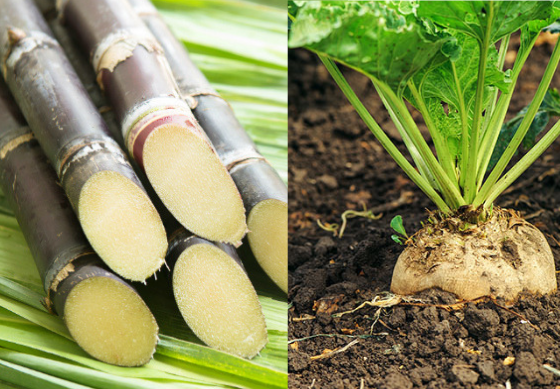The difference between beet sugar vs cane sugar extends beyond sweetness to how they are grown.
Comprehending the Nutritional Advantages of Beetroot Sugar Vs Walking Stick Sugar for Wellness Conscious Customers
When taking a look at the nutritional effects of beetroot sugar versus walking cane sugar, health-conscious customers locate that both selections mostly include sucrose and deal similar caloric values, each contributing about 16 calories per tsp. Despite this similarity, neither kind confers substantial health benefits, as they are without important nutrients. Exploring the broader effects, including environmental considerations and long-term health results of sugar consumption, might illuminate much more nuanced distinctions in between these 2 sugars.
Nutritional Account and Caloric Worth of Beet Sugar and Walking Stick Sugar
Although both beet sugar and walking stick sugar are primarily composed of sucrose, their nutritional accounts and calorie values are extremely similar. Each supplies about 16 calories per tsp and consists almost completely of carbs, with minimal amounts of healthy protein or fat. These sugars likewise lack substantial quantities of vitamins or minerals. The refinement procedure strips away a lot of the intrinsic nutrients, making both kinds nearly the same in terms of nutrition. There are trace differences in the contaminations that remain after processing, which can slightly impact the taste and shade of the sugars, but these are minimal in terms of health and wellness effect. For customers concentrating on nutritional impact, the choice between beetroot and walking cane sugar is more about personal preference or potential ecological problems as opposed to dietary distinctions. Both ought to be consumed in moderation within a balanced diet plan because of their high caloric material and absence of important nutrients (beet sugar vs cane sugar).
Environmental Influence and Sustainability of Sugar Production
While the dietary differences between beetroot sugar and cane sugar are very little, their manufacturing processes provide more considerable differences, particularly in terms of environmental influence and sustainability. In contrast, beet sugar manufacturing generally needs much less land and can be cultivated in more warm environments, which might decrease the requirement for watering and the associated water resource exhaustion.
Nonetheless, beetroot farming is not without its environmental obstacles; it entails significant energy inputs, especially in the northern climates where it is expanded, as a result of the demand for longer home heating durations in sugar handling. Both sugar beet and sugar walking cane sectors are discovering more sustainable practices, including crop rotation, organic farming, and enhanced waste administration methods to alleviate these effects.
Wellness Results and Recommendations for Sugar Intake
Regardless of their marginal dietary distinctions, both beet sugar and cane sugar can have detrimental health and wellness impacts when consumed over. High consumption of either sort next page of sugar adds to a variety of health issues, consisting of excessive weight, kind 2 diabetic issues, and cardiovascular disease. Both sugars are pure sucrose and offer no important nutrients apart from calories, leading to quick spikes in blood sugar degrees upon usage.


Verdict
